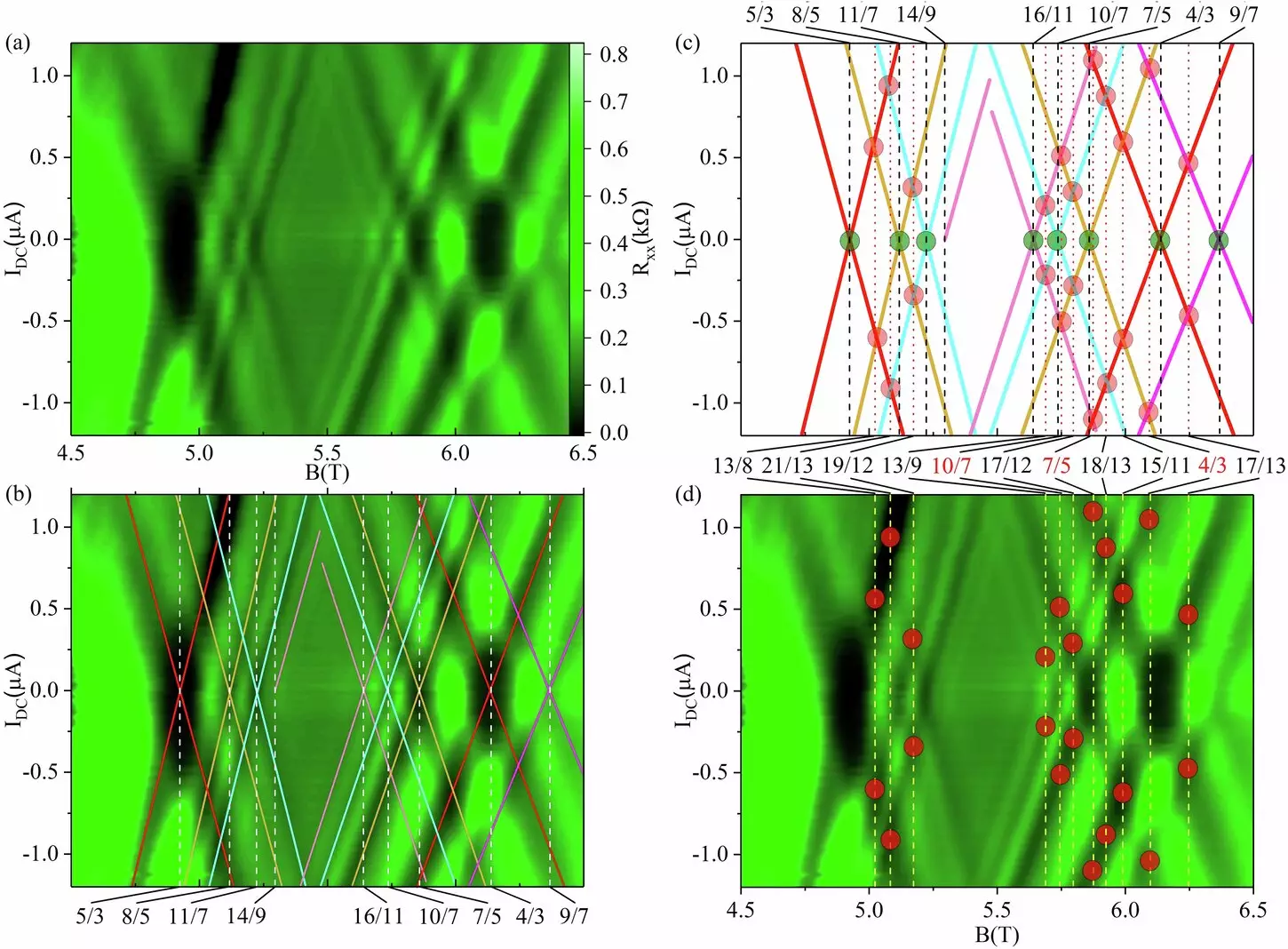In the ever-evolving sphere of condensed matter physics, researchers have delved into the extraordinary realm of fractional quantum Hall effects (FQHE), a enigmatic phenomenon that continues to challenge our understanding of the universe. This field has captivated scientists since Klaus von Klitzing’s groundbreaking 1980 discovery that led to a Nobel Prize-winning revelation: precise electrical measurements could yield fundamental constants pivotal to our grasp of nature. Fast forward several decades to a recent study spearheaded by a team from Georgia State University, including esteemed Professor Ramesh G. Mani and recent Ph.D. graduate U. Kushan Wijewardena. Their research introduces groundbreaking insights into the behavior of particles in a conceptual universe of two dimensions—a flatland, where laws governing the quantum world are both testable and unpredictable.
The journey into FQHE is akin to navigating uncharted territories where electrons showcase bizarre behaviors reminiscent of a Jekyll and Hyde persona, revealing multiple personalities depending on their environment. The researchers’ recent findings, published in the journal Communications Physics, enrich the already vibrant dialogue surrounding quantum phenomena and serve to push existing boundaries forward.
The foundation of FQHE research is rooted in a history rich with discovery. The 1998 Nobel Prize acknowledged the work unveiling the fractional charges exhibited by particles in ‘flatland’—a concept that revolutionized the understanding of quantum mechanics. This concept has evolved through milestones such as the discovery of graphene in 2004, which introduced the possibility of massless electrons, marked by yet another Nobel Prize awarded in 2010. The excitement did not stop there; further explorations into new phases of matter linked to the quantum Hall effect culminated with a Nobel Prize in 2016.
These discoveries have not just provided intellectual fodder; they have catalyzed a plethora of technological advancements that power today’s world. From the GPS systems that guide us to the solar cells harvesting renewable energy, the influence of condensed matter physics is profound. As we stand on the shoulders of these giants, the implications for future technologies—encompassing energy-efficient, advanced electronics—remain tantalizingly within reach.
The recent experiments undertaken by Mani, Wijewardena, and their colleagues shine a light on the high-stakes game of quantum experimentation. By subjecting semiconductor devices made from gallium arsenide (GaAs) and aluminum gallium arsenide (AlGaAs) to extreme conditions—temperatures nearing absolute zero and magnetic fields magnitudes stronger than that of Earth—the researchers set the stage for extraordinary outcomes. Their observations of fractional quantum Hall states splitting and intersecting opened the door to exploring non-equilibrium states within quantum systems, suggesting entirely new realms of matter yet to be understood.
Mani likened their pioneering efforts to exploring the upper floors of a metaphorical building—an invitation to venture into realms scarcely touched by previous research. The application of a simple current bias has unearthed a treasure trove of complex states, showcasing the potential for significant advancements in the study of FQHE.
The implications of these discoveries extend far beyond the laboratory’s confines. As Wijewardena highlighted, their findings challenge existing theories of fractional quantum Hall effects and pave the way for hybrid origins of observed non-equilibrium states. This cross-pollination of ideas not only nurtures the current body of knowledge but also inspires upcoming generations of physicists. The potential of such insights for quantum computing, advanced materials science, and a range of high-tech applications fuels the ongoing research at Georgia State University and beyond.
As the team prepares to explore even more extreme conditions, they are set to investigate challenging flatland parameters. Each of their experiments invites speculation about the unfolding complexities within quantum mechanics, prompting evermore provocative questions about the nature of reality itself.
In this quest to decode the mysteries of the quantum world, the collaboration between experienced researchers and emerging scholars serves both as an enriching educational experience and a beacon of innovation. As scientists like Mani and Wijewardena push forward courageously into unknown territories, they bring us closer to unraveling the intricate tapestry of quantum phenomena that dictates our universe. The ongoing journey into the depths of fractional quantum Hall effects promises to illuminate further corners of modern physics, potentially shaping the trajectory of technology for generations to come.


Leave a Reply